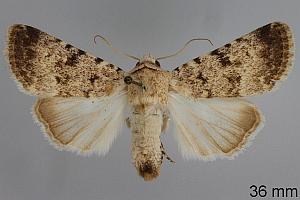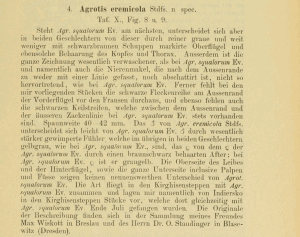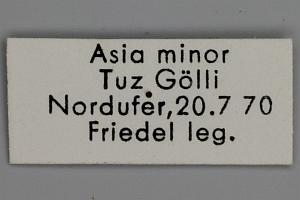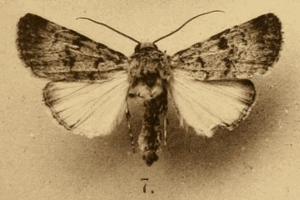Version 16 (neueste) vom 17. Juni 2024 um 17:42:37 von Michel Kettner
Länder:

 +5Kontinente:EUAS
+5Kontinente:EUAS


 +5Kontinente:EUAS
+5Kontinente:EUASInhalt
2. Diagnose
2.1. Männchen
2.2. Erstbeschreibung
1-4: Standfuss (1888: 217, pl. X figs. 7-8) [nach Copyright-freien Scans auf www.biodiversitylibrary.org]
3. Weitere Informationen
3.1. Etymologie (Namenserklärung)
eremus, sc. locus spätlat. Wüste, Einöde, colo bewohne.
3.2. Andere Kombinationen
- Agrotis eremicola Standfuss, 1888 [Originalkombination]
3.3. Faunistik
Fibiger (1990) führt für Europa an: "Many specimens have been taken in the southern Urals, Guberli (coll. Hungarian Nat. Hist. Mus., Budapest, coll. Zool. Mu.s, Helsinki, an coll. Zool. Mus., Leningrad)." Sinev (2019) führt die Art für die Regionen 12 (untere Wolgaregion), 13 (Westkaukasus), 14 (Ostkaukasus) und 17 (Südural) an.
(Autor: Thomas Guggemoos)
3.4. Literatur
- Fibiger, M. (1990): Noctuidae Europaeae. Volume 1. Noctuinae I: 1-208. Sorø (Entomological Press).
- Erstbeschreibung: Standfuss, M. (1888): Alte und neue Agrotiden der europäischen Fauna. — Correspondenz-Blatt des entomologischen Vereins "Iris" zu Dresden 1: 211-219, pl. X-XI.












